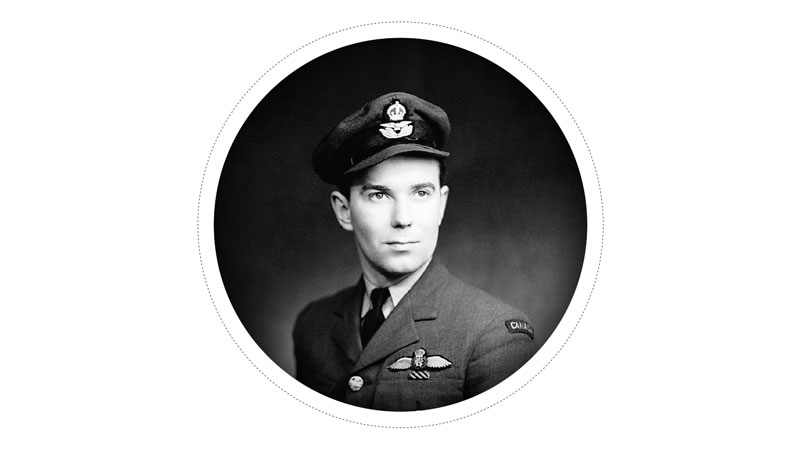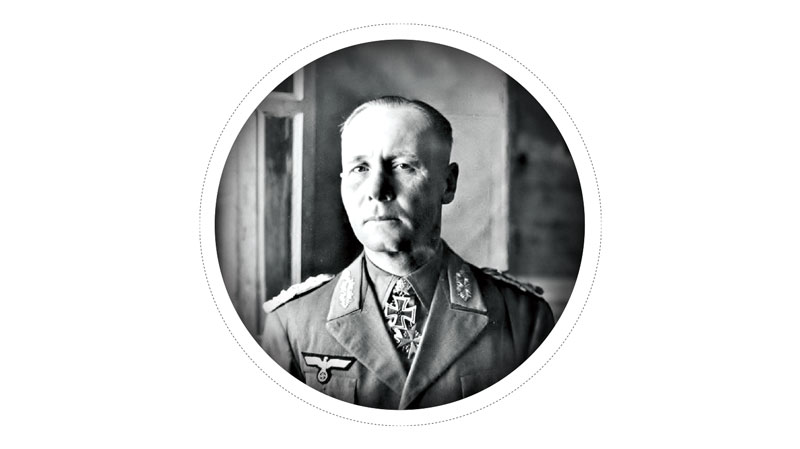
In the late afternoon of July 17, 1944, Royal Canadian Air Force Flight Lieutenant Charles (Charley) Fox’s Spitfire took off from B4 airstrip outside Bény-sur-Mer in France’s Normandy region. Since June 18, Fox’s 412 Squadron, RCAF, had been operating from this square-mesh track forward operating strip situated a short distance inland from Juno Beach. With a wingman, Fox was flying an armed reconnaissance sortie in search of targets of opportunity.
In 2004, a detailed assessment of military records confirmed Fox’s account.
The 24-year-old from Guelph, Ont., had enlisted in October 1940, and became a fighter pilot in May 1943. He deployed overseas that August. In January 1944, he joined 412 Squadron and, on D-Day, he flew three sorties over the beaches. Fox’s squadron specialized in ground attacks, and he was considered one of its most accurate marksmen.
Just outside the village of Sainte-Foy-de-Montgommery, Fox spotted a Horch convertible. “I saw this staff car coming along between a line of trees on a main road. I did a diving, curving attack down and I probably started firing at about 300 yards. I timed the shots so that I was able to fire and get him as the car came through a small opening in the trees. I got him on that pass. We were moving pretty fast, but I knew I got him. I saw hits on the car and I saw it start to curve and go off the road.”
“I knew I got him. I saw hits on the car and I saw it start to go off the road.”
—Charles Fox
Fox and his wingman didn’t immediately realize their attack had just so critically wounded Army Group B commander Erwin Rommel that his military career was over.
Reports late that evening indicating Rommel had been severely injured by Allied aircraft led Fox and his squadron intelligence officer to conclude the “Desert Fox” had been in the wrecked staff car. Fox noted the information in his logbook.
By next morning, four other Allied pilots were claiming credit. In 2004, a detailed assessment of RCAF and German military records confirmed the aircraft involved was a Spitfire with the times, location, and sortie profiles matching Fox’s account.
At the end of an operational tour in January 1945 that had entailed 224 sorties, Fox was credited with destroying or damaging 22 locomotives, 153 vehicles in total and four aircraft. Along the way, he had been awarded a Distinguished Flying Cross and a bar. Fox died in a car accident on Oct. 18, 2008, at age 88.

On July 17, 1944, Generalfeldmarschall Erwin Rommel left Army Group B headquarters at La Roche-Guyon on the Seine River well east of the Normandy battlegrounds in France to personally inspect preparations of 1 SS Panzer Division positions on Bourguébus Ridge aimed at blocking the Allied advance from Caen toward Falaise.
Although an aide reportedly cautioned him against using main roads and suggested travelling in a standard military command car rather than his Horch convertible, Rommel ignored the advice. Daylight movement of German vehicles anywhere on the roads of Normandy risked attack by the scores of prowling Allied fighters. Rommel must have known this, as the Norman roadways were littered with destroyed columns of German trucks, tanks and other military vehicles.
Just outside the village of Sainte-Foy, an aircraft spotter sitting on the back of Rommel’s car shouted a warning that two Spitfires were sweeping toward them. Rommel ordered the driver to increase speed and to swerve onto an approaching side road. There was no time for evasive manoeuvre, however, as fire from the lead Spitfire ripped into the car. The car overturned and Rommel was thrown out. He suffered multiple skull fractures and his face was spattered with glass fragments.
As fire from the lead Spitfire ripped into the car, it overturned and Rommel was thrown out.
Rescuers carried Rommel into the village of Sainte-Foy where a pharmacist dressed his wounds. He was then moved to a Luftwaffe hospital in Bernay. After his condition stabilized, Rommel was evacuated to Germany for extensive treatment and recuperation. Rommel had only just arrived in Germany when a group of German Wehrmacht officer corps conspirators attempted to assassinate Hitler on July 20.
“I shall have to revise my lectures…. No man can be alive with wounds like that.”
—Albrecht von Graefe upon examining Rommel in Germany
Rommel knew of the plot, but reportedly opposed the plan to kill Hitler. Instead, he wanted him arrested and tried. Some historians have argued that had he not been wounded, Rommel could have contributed sufficient credibility to the plot that it might have succeeded. This seems a dubious assertion at best.
On Oct. 14, 1944, Rommel was convalescing at home in Herrlingen, Germany, when two generals came for lunch ostensibly to discuss a future posting. Instead, he was accused of treason. The two officers gave him cyanide pills and advised that Hitler invited him to commit suicide and, if he did so, would take no action against his family. Because the “Desert Fox” was highly esteemed throughout Germany, the cause of his death was covered up and the wounds suffered in the air attack were blamed.
Advertisement



















